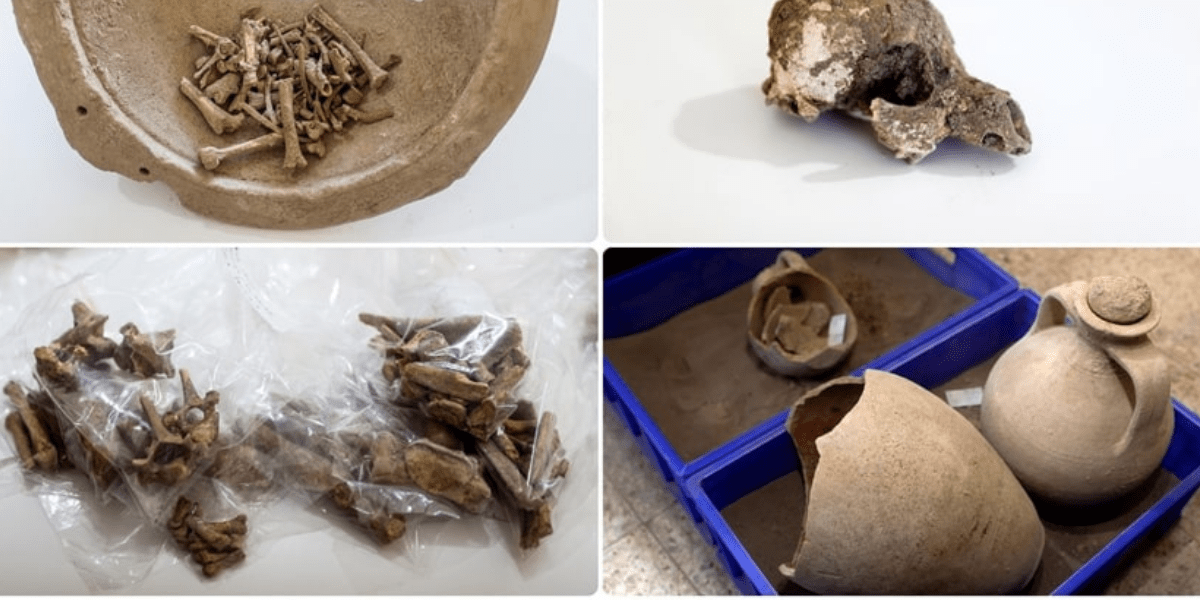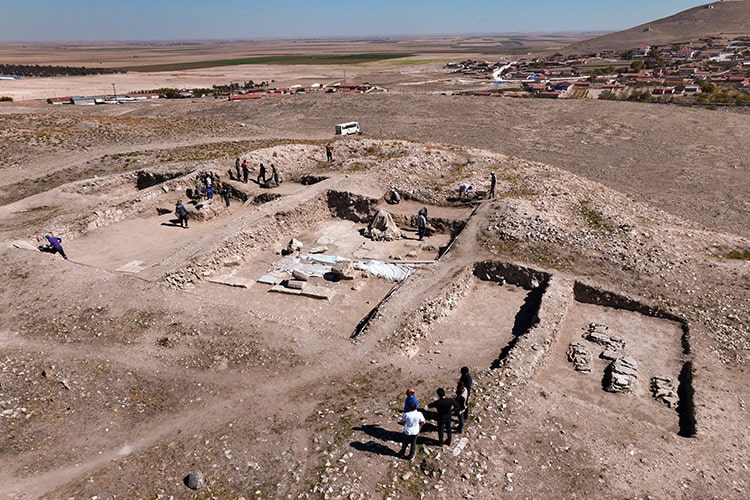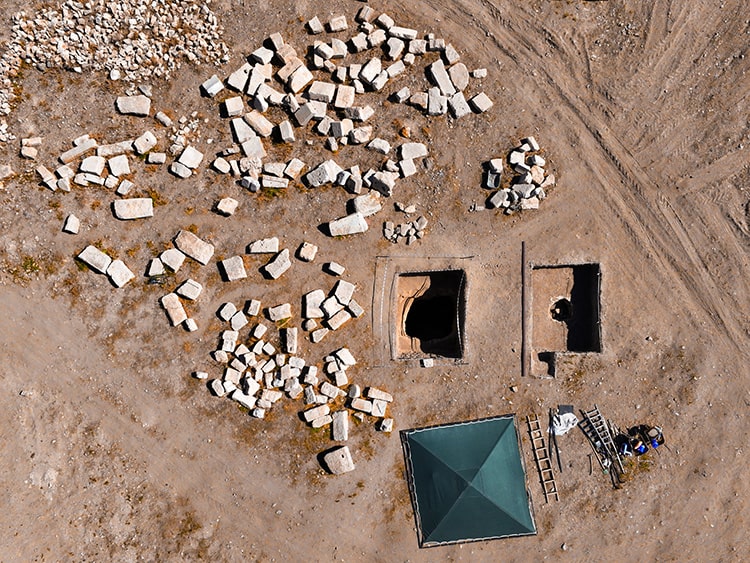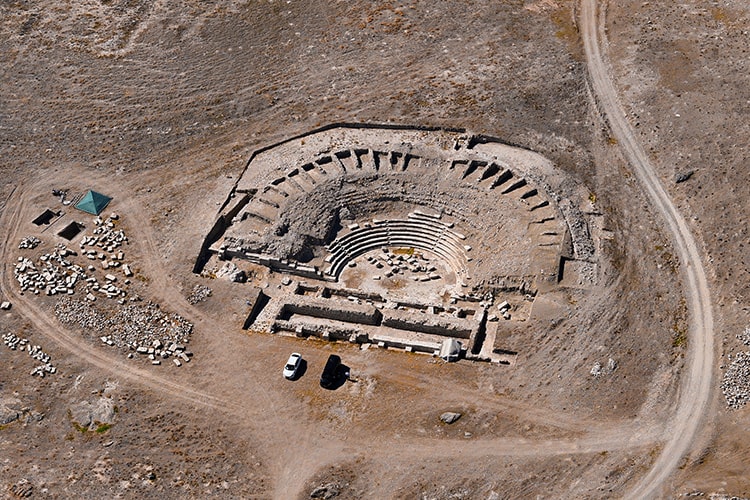
Scientists are examining the headless infant skeletons found in well graves in Savatra
Scientists have begun to examine the headless infant skeletons found in earthenware pots during the excavation work at the ancient city of Savatra in order to understand the lifestyle of the city during that period.
The ancient city of Savatra is an important archaeological site located at the foothills of the Bozdağ Mountains in Konya, situated in the easternmost part of the Lycaonia region. It is mentioned in the works of ancient geographers, including Strabo.

Strabo mentions that Savatra (or Soatra) is a town near Garsaura (Aksaray) and notes that it is home to some of the deepest wells in the world.
Archaeological excavations in the city are being carried out by Assoc. Prof. Dr. İlker Işık and his team from the Department of Conservation and Restoration of Cultural Heritage at Selçuk University (SÜ).
The headless infant skeletons under examination were discovered in 2021 during excavation work in two well graves located south of the Roman Period theater.

Assoc. Prof. Dr. İlker Işık stated, “In the corners of the well, we found almost intact earthenware pots. Inside the discovered pots, there were headless infant skeletons, and on top of the pots, there were also dog skulls. We believe this was done as part of a religious ritual. This is a type of burial that is very rare both in the world and in Anatolia.”
Işık mentioned that expert teams have initiated scientific studies regarding these findings.
He noted that, through the geo-radar work conducted by Prof. Dr. Kemal Gökay, they encountered another well grave located 3 meters south of the first well. Işık stated, “In this well, we also found infant and dog skeletons; however, unlike the other one, we also came across bones of a fox, cattle, horse, and donkey. Following this exciting work, we are planning to expand the area further. In this context, we have conducted physiological studies. When we examined the ceramic samples, we found artifacts dating from the Early Roman Empire Period to the Late Antiquity, covering a time span of about 1500-1600 years ago. After reaching other well graves, we hope to encounter new findings that will contribute to the cultural history of Anatolia. Each finding may potentially push the historical timeline further back.”

Archaeologists have begun an important excavation of a kurgan burial mound. Additionally, excavation work is ongoing to uncover the foundations of the church located on the mound west of the ancient theater.
Cover Photo: AA
You may also like
- A 1700-year-old statue of Pan unearthed during the excavations at Polyeuktos in İstanbul
- The granary was found in the ancient city of Sebaste, founded by the first Roman emperor Augustus
- Donalar Kale Kapı Rock Tomb or Donalar Rock Tomb
- Theater emerges as works continue in ancient city of Perinthos
- Urartian King Argishti’s bronze shield revealed the name of an unknown country
- The religious center of Lycia, the ancient city of Letoon
- Who were the Luwians?
- A new study brings a fresh perspective on the Anatolian origin of the Indo-European languages
- Perhaps the oldest thermal treatment center in the world, which has been in continuous use for 2000 years -Basilica Therma Roman Bath or King’s Daughter-
- The largest synagogue of the ancient world, located in the ancient city of Sardis, is being restored











Leave a Reply